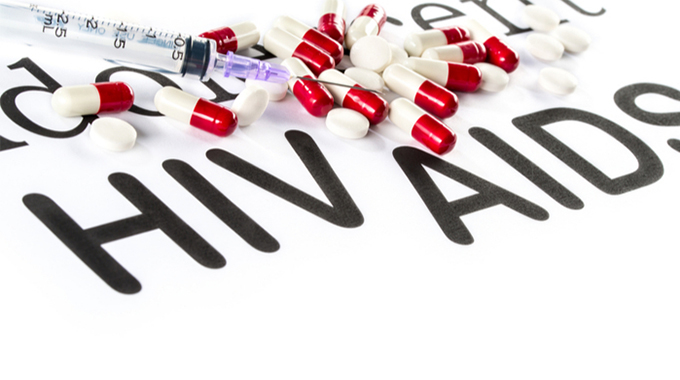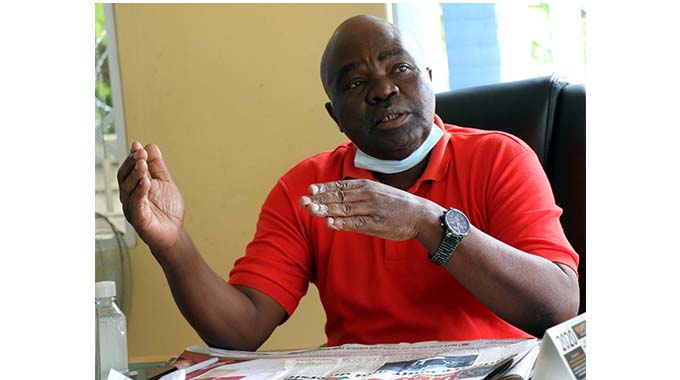Young women, girls account for majority of new HIV infections

Lungelo Ndhlovu
The high prevalence of HIV among young girls and women has emerged as a cause for concern in Zimbabwe, with 1 705 new infections recorded recently among females in Bulawayo province alone, according to the National Aids Council of Zimbabwe (NAC).
The HIV prevalence rate among adults in Bulawayo between the ages of 15 to 49 is 13,77 percent higher than the national prevalence of 12,9 percent which corresponds to approximately 1,23 million adults in Zimbabwe living with HIV in 2020.
A survey conducted by the Zimbabwe Population-based HIV Impact Assessment (Zimphia) in 2020 indicates HIV prevalence was higher among women than men (15,3 percent versus 10,2 percent).
Speaking at the Fast-Track Cities signing ceremony, an initiative by the UNAIDS, in Bulawayo recently, Mayor, Councillor Solomon Mguni, said new infections in women were double the number of infections in men.

“We have 1 705 new HIV infections. Although the new infections have declined by approximately 60 percent from 2010 to 2020, we still have a long way to go. Of concern is the prevalence of new infections in young girls and women. New infections among women are more than double the number of infections in men between the ages of 15 to 24,” he said.
The mayor added that the high new infections in vulnerable communities, where there are domestic challenges and in areas with small-scale mining, was also concerning infections in key populations.
“It is also of concern that the HIV knowledge gap continues to widen with the new generation of young people who are the most vulnerable and most affected,” Clr Mguni said.
To show commitment towards HIV programming and meeting global targets of ending the pandemic by 2030, the mayor said 19 clinics in Bulawayo continued to offer HIV/Aids integrated programming with a special focus on key populations.
“Our staff have been trained from the most senior to the junior staff on how to ensure that we don’t discriminate against our patients. Working with different partners, we’ll be training other non-medical staff in our clinics such as security guards and cleaners to ensure that our integrated programmes on HIV are managed at all points of treatment of our patients,” said Clr Mguni.
Mr Raymond Yekeye, Nac Director of Operations indicated that although Zimbabwe was moving in the right direction in ending HIV by 2030, there were still some gaps in achieving their 90-90-90 targets.
“Our recent studies have shown that Zimbabwe is one of the few countries that have achieved the global targets of 90-90-90 and that we’re now closer to reaching the goal of ending HIV/Aids,” he said.
The United Nations General Assembly’s Political Declaration on Ending Aids committed countries to the 90-90-90 targets in 2016, which aim to bring HIV testing and treatment to the vast majority of people living with HIV by the end of 2020, to reduce the amount of HIV in their bodies to undetectable levels, so that they are healthy and prevent the further spread of the virus.
The Southern African Gender Protocol 2020 Voice and Choice Barometer indicates that the region accounts for 46 percent of all people, and 58 percent of the adolescents living with HIV in the world. The world missed the 2020 “90-90-90 targets set by UNAIDS. Of the eight countries in the world which achieved the 90-90-90 targets, four are in Africa (Eswatini, Botswana, Malawi and Uganda).
A further 11 countries globally reached the overall 73 percent viral suppression target, including Zimbabwe, Lesotho, Namibia and Zambia in Sadc; Kenya and Burundi in East Africa, but did not achieve one of the three 90s, the gender protocol indicated.
“Despite all these successes, we still have huge gaps in terms of how we’re responding to HIV/Aids. We’re not meeting our targets in terms of reducing new infections. We were expecting around 30 000 new infections by now (2020) but we’re still far behind and getting new infections of 37 000 in the region of new infections annually,” said Mr Yekeye, noting these were mostly among young women.

HIV and Aids
“Specifically for Bulawayo, I’m informed by our provincial office that we still have challenges particularly among adolescent girls and young women. We have a whole generation of people who have never seen the impact of HIV and we’re seeing an increase in those new infections particularly in those groups,” said Mr Yekeye.
He said alcohol and substance abuse, early child marriages and cases of gender-based violence were fuelled by the recent Covid-19 pandemic lockdowns also contributing to new infections.
“Spousal separation in the region and even in the city is very high and this has led to a slow decline in new infections. We have key populations and among those key populations, we have those who are in informal settlements and hotspots and these remain underserved,” he said.
“It’s therefore key and important for the city to be part of this initiative. We’re hoping that this partnership will leverage on the technical capacity to build our response effectively and learn from the city of Bulawayo on how to effectively respond to HIV. But also more importantly that Bulawayo would be able to tap into the expertise and successes of other cities who are already part of this initiative. Nac stands ready to walk with you,” he said.
UNAIDS Country Director Sophia Mukusa commended the city of Bulawayo’s progress on HIV response, and also welcomed the city on joining other 350 cities and municipalities globally which have joined the Fast-Track Cities Initiative since its inception in 2014.
She spoke on the importance of making sure that marginalised and vulnerable groups in society had access to healthcare services.
“As the global Aids strategy 2021-2026 sets out, to end Aids, we have to end the inequalities which perpetuate the epidemic. There’s another huge benefit to this approach if we’re addressing inequalities. The same laws, policies and people-centered health services, also help the world overcome Covid-19. We need a paradigm shift in health financing and investing in community-led human rights based gender transformative responses as well as investing in essential workers and health technologies,” she said.
Ms Nothando Hadebe, the Public Relations Officer for the Youth Initiative for Empowering Leadership and Development (YIELD) organisation which focuses on young people in the age range between 18 to 24 years said Bulawayo should prioritise young people’s sexual and reproductive health and rights (SRHR) issues in order to reduce the prevalence of new infections amongst girls.
“The City of Bulawayo should establish health booths as per wards. In as much as we have Econet booths, health booths are ideal for easy access to SRHR services. In this case, people don’t really need to go to the clinics or hospitals to get tormented,” she said.










Comments